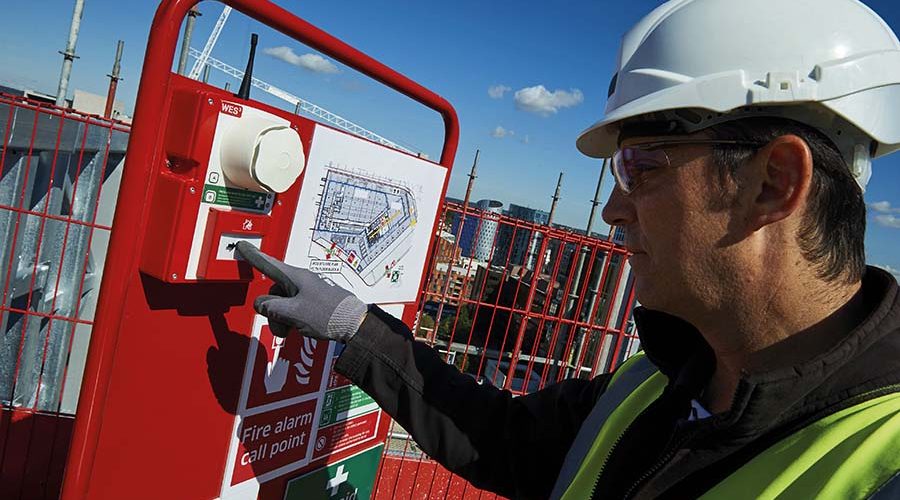Here, Adam Jurka, National Sales Manager at Ramtech Electronics, looks at why buildings with dangerous cladding need to follow NFCC guidance and move over to safer and more permanent interim measures to protect residents from fire.
Ramtech
More than three and a half years after the devastating fire at Grenfell, residents in some high-rise buildings are still relying on ‘temporary, short-term’ measures, such as waking watch to alert them of a fire.
Official figures illustrate the scale of the problem with 300 tower blocks over 18m in England alone, all with ‘Grenfell-style’ cladding and still waiting to be made safe. This doesn’t include the Government’s estimated 1700 buildings over 18m that have systems known to be dangerous, including some timber, high-pressure laminate and polystyrene cladding and insulation systems. Then there are an estimated 100,000 buildings between 11 and 18m across the UK that may have dangerous cladding materials on the outside. At current levels of progress, remediation work on these buildings will take decades.
In the meantime, waking watches are far from ideal because they rely on the person seeing the fire in a very large building with multiple floors. Other buildings with dangerous cladding are protected only by security guards, who are expected to patrol 24 hours a day, alerting residents should a fire break out. The cost of doing this – borne by the building owner and/or residents – can be as high as £250,000 a year per building.
There is then the issue of how long it takes a waking watch person to alert an entire block of residents, when we know that fire can spread in minutes. They are usually required to do this using an airhorn, hardly an efficient method in a multi-occupancy building.
A technology-based approachNFCC (National Fire Chiefs Council) has recently released its third edition ‘Guidance to support a temporary change to a simultaneous evacuation strategy in purpose-built blocks of flats’. It clearly states that building owners should move to install common fire alarms as quickly as possible to reduce or remove the dependence on waking watches. This is the clear expectation for buildings where remediation cannot be undertaken in the ‘short term’.
This approach should, in almost all circumstances, reduce the financial burden on residents where they are funding the waking watches. Others also support this guidance, calling for affected buildings to move over to safer and more permanent interim measures, such as sprinklers and fire alarms.
Achieving this using a wireless fire alarm system offers several benefits; it can be rapidly deployed to create a ‘common’ fire alarm in any size of building, whilst being wireless avoids having to drill holes through walls for cabling, so maintaining integrity of the fire compartments. The NFCC has identified holes or apertures as a potential issue claiming “common alarm systems installed in the premises must not have any adverse effect on the other fire safety provisions in the building. For example, the installation of a wired system must not create a route for fire and smoke to spread in fire-rated walls which were previously imperforate”.
The signal from a wireless fire alarm system passes through all commonly-used materials in a building, which avoids having to drill holes. If just one of the heat/smoke detectors is activated, it sounds an alarm via multiple interconnected call points in all areas of the building allowing ‘simultaneous evacuation’. They do not rely on manual intervention, or a waking watch person seeing the fire. Systems are available that have a three-year battery life, so little or no maintenance is required, whilst automatic detection reduces human error. When specifying a wireless fire alarm system, it should be compliant to EN 54.
Innovation in internet connectivity, apps and the ability to collect, analyse and interpret data in live stream have extended the functionality of wireless fire alarm systems. For instance, the REACT app-based safety system can remotely communicate alerts raised by the alarm system in real-time to relevant personnel, such as property managers, who are based off site via an app installed on their smartphone or tablet device. Alerts raised can be supported with site-specific plans to highlight the incident’s precise location. Users can then record actions on their device, which are automatically uploaded to the cloud for feedback to relevant group members.
There are real and justified safety concerns from residents about having waking watch personnel, and especially at a time when they are required to maintain social distancing. That is the reason why a growing number of organisations support NFCC’s call for common fire alarms or sprinklers.








